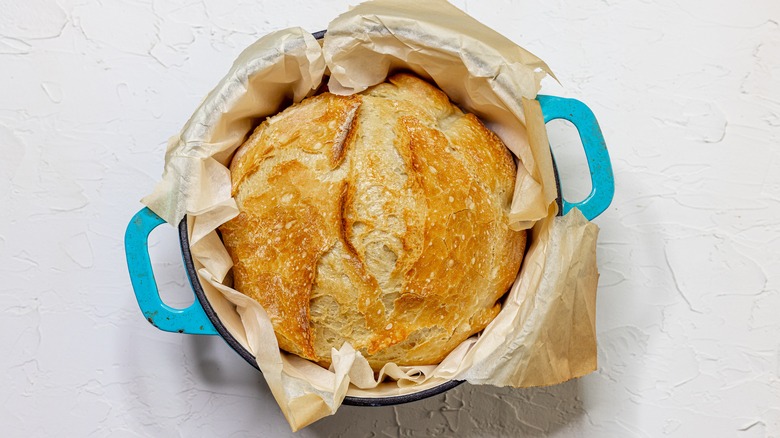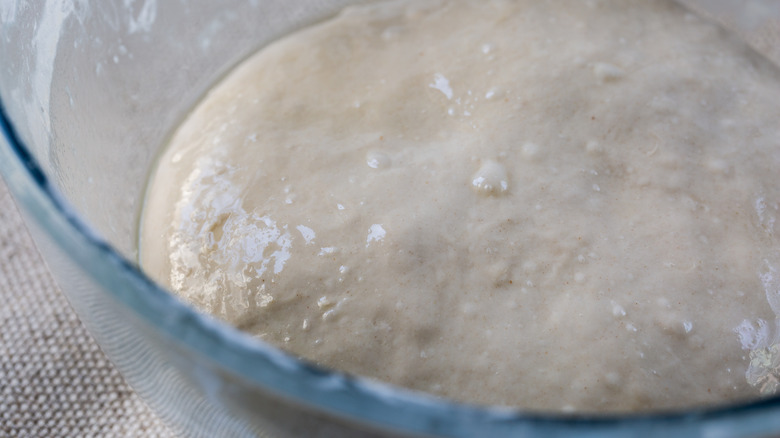How No-Knead Bread Dough Actually Works
Remember back in 2020, when a contagion of unprecedented proportions swept through America? No, not COVID-19; we're talking about sourdough fever. The bread-baking craze hit us hard, but it was never destined to last, and interest in home cooking declined as people sought more convenient options. But baking bread doesn't need to be laborious, and if convenience is the issue, there's no reason the trend should ever end. Recipes for no-knead bread yield soft, airy, perfectly crusty loaves with minimal manual effort. All you have to do is combine the ingredients, then cover the bowl and ignore it for 18 hours. When the timer dings, ball up the dough, throw it in the oven, and boom, you're done.
It sounds too good to be true, doesn't it? Kneading serves a vital role in bread making, helping to develop bonds between the gluten strands in the dough (per MasterClass). This is instrumental in forming a network of gluten strong enough to trap the gas bubbles made by yeast and keep the dough airy. Given this fact, you'd expect no-knead bread to have a poor gluten structure, resulting in a very dense loaf — but it doesn't. You'll be spared the effort, and all you need to give in exchange is a bit of extra patience.
The secret is wet dough and a lot of time
The first thing you'll notice when making no-knead bread is that it's wetter and stickier than your typical bread dough. A high level of hydration is key for a few reasons. Firstly, MasterClass points out that the union of water and flour is what forms gluten strands, to begin with. More water in the dough produces a more "open crumb" — in other words, a light loaf with lots of air bubbles (via King Arthur Baking). The moisture content is especially important for no-knead bread because gluten molecules are more mobile in a wetter environment, so they can easily move into alignment, per The New York Times.
The second element of no-knead bread is time. As The New York Times points out, once gluten strands have formed, they will naturally align on their own to form strong networks and therefore airy loaves. It takes a long time — about 18 hours — for this to happen. Kneading speeds up the process, but if you aren't in a hurry, you can bypass it (and if you are in a hurry, what are you doing making bread in the first place?). However, King Arthur Baking is quick to point out that this principle does not work for every style of bread. Certain loaves, like challah, need a sturdier dough for shaping, but when convenience comes first, it doesn't get better than a no-knead loaf.

